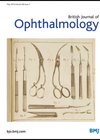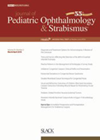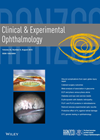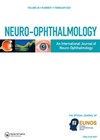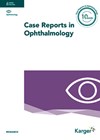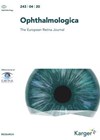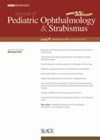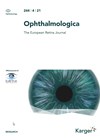You searched for "globe"
Ocular Trauma Scores in paediatric open globe injuries
This is a retrospective case series of 71 open globe injuries in children of less than 18 years of age, with a minimum follow-up period of one year, between 1 September 1992 to 31 July 2011, from the Eye Department...Review of paediatric open globe injuries in the US
This study used the Nationwide Inpatient Sample (NIS) database to describe the trends in types, demographics and incidence of paediatric open globe injuries in the US. The NIS database covers about 97% of the US population and about 20% of...Clinical characteristics and outcomes of open globe injury
1 December 2015
| Anjali Gupta
|
EYE - Cornea, EYE - General
|
endophthalmitis, open eye injury, penetrating eye injury, wound leak
This retrospective cohort study examined consecutive open globe injuries at a tertiary referral centre over a three year period. The aim of the study was to detail the clinical characteristics of open globe injuries and to explore their association with...
Long-standing flattening effects on the globe following spaceflight
1 December 2021
| Claire Howard
|
EYE - Neuro-ophthalmology
|
SANS, astronaut, hyperopic shift, international space station (ISS), long-duration space flight (LDSF), visual changes
Posterior globe flattening has been well-documented in astronauts both during and after long-duration spaceflight (LDSF). This globe flattening is thought to be due to the disc centred anterior forces created by elevated volume and / or pressure within the optic...
Globe subluxation subsequent to long-term steroids
Globe subluxation, when the globe equator projects anterior to the orbital rim, is a serious orbital condition commonly associated with thyroid eye disease, floppy eye syndrome or a shallow orbit. The authors present a first case of a spontaneous globe...Risk factors and prognosis of paediatric open globe injuries
1 October 2021
| Sofia Rokerya
|
EYE - Vitreo-Retinal
|
Choroidal damage, Endophthalmitis, No light perception, Pediatric open globe injuries, Vitreoretinal surgery
This retrospective, comparative, interventional case-control study was aimed to investigate possible risk factors and prognosis of initial no light perception (NLP) in paediatric open globe injuries (POGI). A total of 851 cases were reviewed, including 837 unilateral cases and 14...
Across the globe and into the world of international eye grading
4 October 2023
| Rahila Bashir
|
EYE - Imaging
Decades have passed and the influence of analysing fundus images by grading consultants and retinal image specialists has grown worldwide. Their job is to specialise in assessing hundreds of diagnosed eye disease disorders and to read thousands of eye images,...
Globes in space: What would happen to our globes on the globe of Mars?
Many films have been made regarding life on alternative planets. With the Mars One mission approaching in 2023, there are high expectations regarding future interplanetary travel. The authors provide an ophthalmology perspective on what could happen to our eyes if...A case study of posterior globe flattening in idiopathic intracranial hypertension
7 December 2020
| Claire Howard
|
EYE - Neuro-ophthalmology
|
Papilloedema, idiopathic intracranial hypertension, magnetic resonance imaging, raised intracranial pressure
The authors present a single case of posterior globe flattening without papilloedema in idiopathic intracranial hypertension. The case was a 64-year-old woman with a one-year history of transient visual loss in her left eye only. Visual acuity was 20/20 in...

